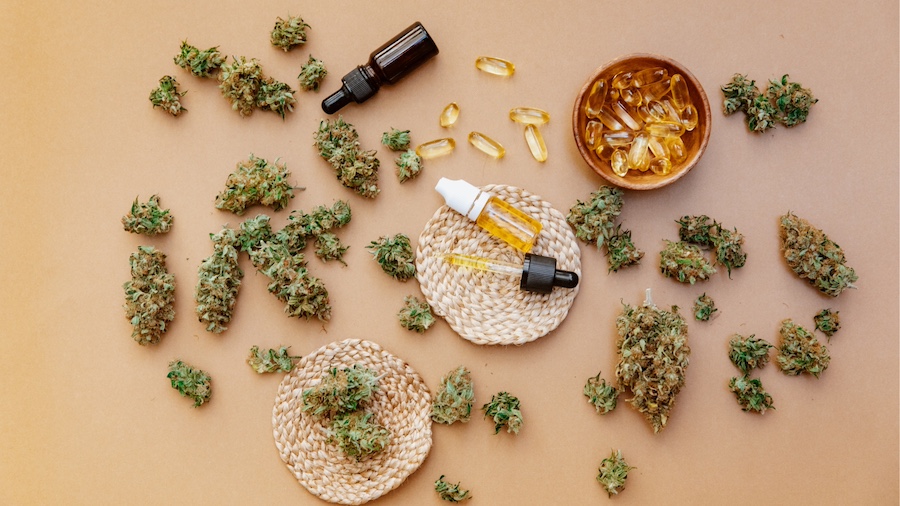Cannabis Consumption: Dosing and Tolerance Levels

Welcome to Kelly’s Green! Our mission is to guide you through the medical cannabis journey with knowledge and understanding. This guide is crafted especially for you, aiming to demystify the various methods of cannabis consumption and the importance of dosing and tolerance levels.
Understanding the right dosage is crucial for achieving the desired therapeutic effects without overuse. Similarly, knowing how your body’s tolerance can change over time helps in adjusting doses to maintain effectiveness.
Our goal is to empower you with the information you need to make informed choices about your treatment, ensuring your medical cannabis use is as effective and beneficial as possible. Let’s explore how to navigate dosing and tolerance levels together, making your path to wellness informed and tailored to your needs.
Consumption Methods
As we embark on the journey of medical cannabis, it’s crucial to understand the various ways it can be consumed. Each method has its unique benefits and effects, which can cater to individual medical needs.
Inhalation offers quick relief and easy dosage control, while oral consumption, such as through edibles or capsules, provides longer-lasting effects, beneficial for chronic conditions. Topicals can target localized pain without cerebral effects, and sublingual applications offer discretion and rapid onset.
Finding the right method for you is a personal journey, and our guide aims to provide a clear overview to inform your choice.
Inhalation
Inhalation, either through smoking or vaping, is one of the quickest ways to experience the effects of medical cannabis. It allows the active compounds to enter the bloodstream directly through the lungs, providing rapid relief from symptoms such as pain, nausea, or anxiety.
For patients managing acute symptoms, this immediate onset is crucial. Smoking can be done using traditional methods like joints or pipes, while vaping uses devices to heat cannabis without combustion, potentially reducing respiratory risks.
It’s also easier to control the dose with inhalation, as patients can stop once the desired relief is achieved. However, the effects of inhalation are not as long-lasting as other methods, so it may require more frequent use for sustained symptom management.
Always consult with a healthcare professional to determine the best consumption method for your specific needs.
Oral Consumption
Oral consumption of medical cannabis, through edibles and tinctures, is characterized by a slower onset of effects compared to inhalation. This method involves the cannabis being processed by the digestive system before entering the bloodstream, which can take anywhere from 30 minutes to a couple of hours.
However, once the effects begin, they tend to last significantly longer than those of inhaled cannabis, often providing sustained relief for several hours. This extended duration can be particularly advantageous for patients with chronic conditions who require consistent symptom management.
Edibles and tinctures allow for precise dosing, making it easier to monitor and adjust intake as needed. It’s important for patients to start with a low dose and wait to understand the full effects before consuming more to avoid overmedication.
Topicals
Topicals in the form of creams, lotions, and balms infused with cannabis are applied directly to the skin for localized relief. They are designed to alleviate discomfort from conditions such as arthritis, muscle soreness, or skin irritations without the psychoactive effects typically associated with other cannabis products.
This is because the cannabinoids in topicals interact with the skin’s endocannabinoid system, targeting the area of application. They do not enter the bloodstream in significant quantities, which means they provide relief right where it’s needed without affecting the rest of the body or the mind.
Patients value topicals for their ease of use and the ability to apply them throughout the day as necessary without any cognitive impact.
Sublingual Absorption
Sublingual absorption, utilizing products like sprays or strips, is an efficient consumption method for medical cannabis. Placed under the tongue, these products are absorbed directly into the bloodstream through the mucous membranes, offering a quick onset of effects similar to inhalation but without the need for smoking.
This method is discreet and easy, ideal for patients who require rapid relief and may not be able to use inhalation methods due to respiratory concerns or personal preference.
Additionally, sublingual application bypasses the digestive system, ensuring a more consistent absorption of the cannabis compounds and making dosing more predictable and straightforward. It’s a preferred option for those seeking control over their symptoms with minimal impact on their daily activities.
Understanding Tolerance
Understanding tolerance in the context of medical cannabis is a complex process. It refers to the body’s adaptation to the presence of cannabis, which can result in diminished effects over time. This biological change means that a patient may require higher doses to achieve the same level of symptom relief as initially experienced. Tolerance is influenced by several factors, including how often cannabis is used, the potency of the products, and individual genetics that can affect how one metabolizes and responds to cannabis.
Tolerance is not the same for everyone. Some patients may develop it quickly, while others might not notice significant changes even with regular use. Genetics can play a substantial role in this variability. Certain genetic markers can influence how cannabinoid receptors in the brain respond to THC, the primary psychoactive component of cannabis.
In addition to genetics, the mode of consumption and the potency of the cannabis product are also critical in determining tolerance levels. Products with higher concentrations of cannabinoids, like certain concentrates, may lead to a faster buildup of tolerance. On the other hand, methods that deliver a more controlled dose, such as microdosing with tinctures or low-dose edibles, can help in managing and mitigating tolerance development. It’s essential for patients to monitor their cannabis use and consult with healthcare providers to adjust dosages as needed.
Managing Tolerance
Properly managing tolerance is key to maintaining the therapeutic efficacy of medical cannabis. Tolerance breaks, or ‘T-breaks’, involve abstaining from cannabis for a period to reset the body’s response to it. This can help reduce the dosage needed to achieve the desired effects.
Another strategy is strain rotation, which involves alternating between cannabis strains with different cannabinoid and terpene profiles, potentially preventing the body from becoming overly accustomed to one particular type.
Lastly, adjusting dosages can be a nuanced approach that requires medical supervision; it may involve reducing the amount consumed or changing the frequency of use. It’s critical for patients to work closely with their healthcare provider to monitor their response to cannabis and make adjustments that are safe and effective for their individual needs.
We encourage patients to consult with healthcare providers to tailor their cannabis use to their medical needs. Starting with low doses and going slow is key to finding the most effective and safe consumption method for you.
